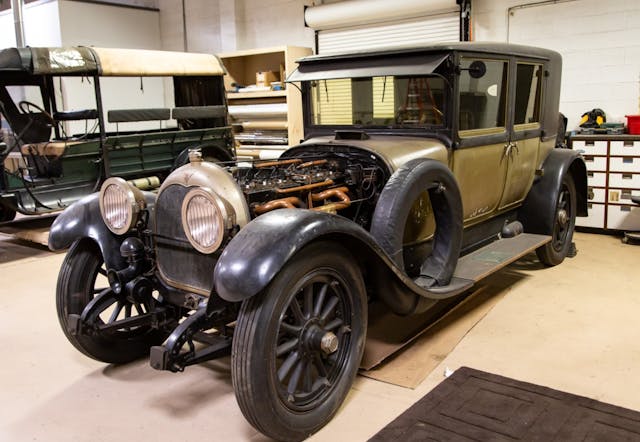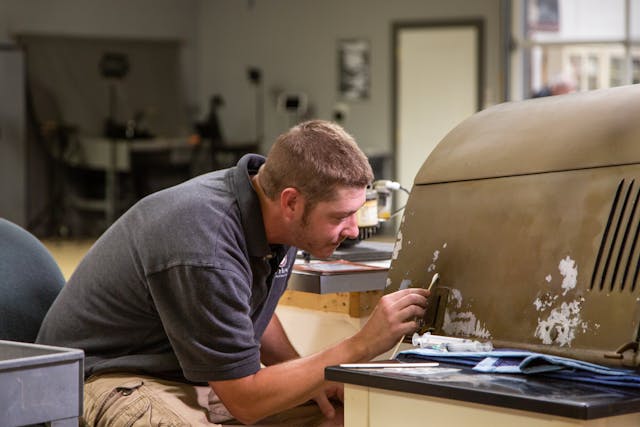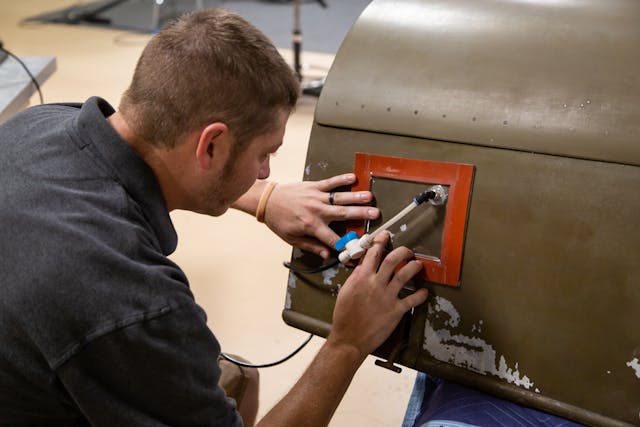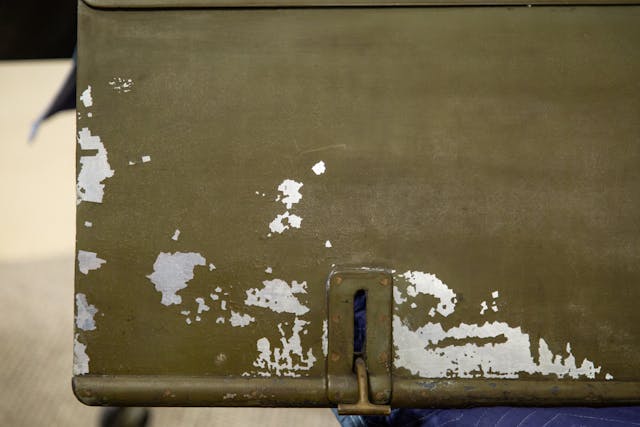Media | Articles
Saving the paint on a historic vehicle may be meticulous, but it’s vital for conservation

To conservationists, the best paint job is a car’s first paint job. Although preserving that paint is neither fast nor easy, it is vital.
In the third episode of The Conservator’s Mindset, a video docuseries from the Historic Vehicle Association, B.R. Howard & Associates’ Collin Howard demonstrates how it’s done.

“Without some process being done to it now … all the paint will flake off eventually,” says Howard, the lead technician. “If we lose all of the paint, then we won’t have a good description of what this was originally.
“I would say there’s not a car collection in the world that doesn’t have a car with flaking paint in it. So, in consolidating I have to stick all the paint back down before we could clean or do any varnish removal or overpaint removal. We need to re-adhere these lifting edges so they won’t continue to pop off.”

Resin is injected under the lifted areas through the use of a hypodermic needle—two, actually. One contains a reversible polymer resin, and the other contains ethanol, which acts as agent to draw the consolidant underneath the flaking paint. Howard places a sheet of non-stick silicone release Mylar over the area and uses a wooden craft stick to apply pressure to the area and spread the resin.
Marketplace
Buy and sell classics with confidence
For larger areas, a sheet of Mylar, framed with a flexible seal, is placed over the area and a small pressure pump ensures that the resin is evenly distributed.

“Typically, to consolidate just what you see on this side of the hood [about a 3-foot section] could take anywhere from 15 to 20 hours,” Howard says. “It’s a very tedious process.”
And an essential one. “The first step in repairing flaking paint is consolidation,” Howard says. “Then all the other processes can happen. Even if we go no further, this can go back into a non-climate-controlled area and I don’t have to worry about the paint continuing to oxidate or flake off.”

The Conservator’s Mindset is part of the HVA’s Drive History video initiative, which showcases veteran preservationists, historians, and automotive experts and also features vehicles in the National Historic Register. Videos are scheduled to be released every Wednesday.
We’ll be sure to keep you posted about each new episode; you can also stay in the loop by following the HVA on Facebook, Instagram, and Youtube.

